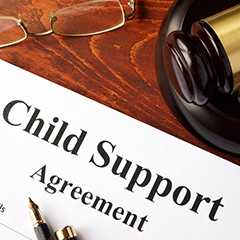Dealing with Child Support Withholding Orders
January 21, 2019 | Uncategorized
|
These numbers are large, not just because of a high divorce rate, but because systems have been established to help state agencies find those people who might otherwise avoid their support obligations. These systems involve every business with employees, through a requirement that you provide basic information about new hires within 20 days of their start date (and sometimes sooner, depending on your state. In Maine, it’s 7 days and can be done online through the New Hire Portal, by mail or by fax.) Required Data The mandate to report new hire data has been in effect since the Personal Responsibility and Work Opportunity Reconciliation Act of 1996. The items that need to be reported to the relevant agency in your state (in Maine, the Maine Division of Support Enforcement & Recovery) are: the employee’s name, address, Social Security number, and the date of hire, along with your company’s name, address, and federal ID number. It’s the same essential data collected on a Form W-4 so you should have it should be available. Requirements do vary by state. Some will allow you to file electronically, others want paper filing. If you fail to comply with your reporting obligation, civil penalties, and potentially even criminal penalties in extreme cases, can result. If you have employees in more than one state, you can either file in each state the employees work in or send all the forms to one state. If you do the latter, you are obligated to file electronically and to let the OCSE which state the information is filed with. Note that a “new” hire includes anyone you have rehired if they haven’t been working for you in the last 60 consecutive days. And if a new employee quits early on, as long as they earned wages, you still need to file the report. The information collected is pooled into a national employee database and helps state agencies track down parents who have not lived up to their child support obligations. If one of these parents is on your payroll, you will get a four-page IWO form that may be accompanied by a seven-page set of instructions. This may come from a state agency, a court, an attorney, or just an individual. Next Steps Should you receive this form, you need to do the following things:
If the form was not sent by a court or a state agency, the IWO is considered a “notice,” not an order. And if the IWO came from another state, or if the related box is checked on the form, you will need to give a copy to the employee. Finally, if everything is correct, you just need to comply with the terms of the order. A standard requirement is that you’ll have to begin withholding child support funds by the first pay period the starts 14 working days after the IWO was mailed to you. You then have seven business days to relay the withheld funds to the state agency that disburses the funds to the recipient. (Some states may require faster turnaround; review the instructions carefully.) You are within your right to deduct an administrative fee from the employee’s paycheck to recoup your added cost, although limits apply to these charges. What if an employee changes their withholding allowances to reduce the child support payment amount? That is not up to you to counteract. The IRS may withhold any unfulfilled required child support payment amounts from the employee’s tax refund. In Conclusion Delinquent child support issues can be simple or complex. There may be emotional outbursts from your employee, but your responsibility is clear. If necessary, contact your payroll advisor to make sure you’re meeting your reporting and withholding obligations, but do not ignore them. |

